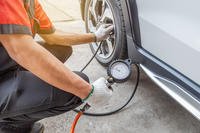Cars are part of the American fabric. The satisfaction they provide and the messages they broadcast are undeniable. However, they are also an existential – that was my must use word for the day – roadblock to financial security.
Years ago, I wrote an article about how driving your family cars for a few extra years could transform you into a millionaire. A couple of weeks ago I decided to touch up that theme with a fresh coat of paint and get it back out on the street. It’s really pretty exciting; a few savvy moves with your upcoming car purchases could truly help secure your financial future.
Frame up your next car purchase with these four thoughts in mind and you could be on the fast track to financial freedom.
- A missing car payment every three years can fill a huge gap ($800K). This was my original premise. According to Experian*, at the end of last year, the average car payment for a new car was $506 per month. Take the inflation-adjusted car payment and invest it at 7% for three of every eight years (the extra three years of driving) and when you hit 67… drum roll, please … you’d have around $800,000. Talk about being able to buy some experiences that would be a lot cooler than sitting behind the wheel in traffic.
- Undercutting the average could propel you to far outperform ($300K). According to the same Experian data, the average new car cost was $30,621. What if, just once, you undercut that by half and stuck the proceeds of your frugality in a long-term investment account. Forty-some years later you’d have a nice chunk of change set aside.
- Paying attention to the total cost of ownership can pay big dividends (You do the math). Anyone who has owned a vehicle understands that the car payment is just one element of what it costs to drive and maintain a car or truck. Expenditures on gas, auto insurance and maintenance can vary dramatically from vehicle to vehicle. Just remember, money spent to fuel, fix or insure your vehicle is money that’s not available to pay down debt, build savings or invest for the future.
- Older is better. Call me crazy or just self-aware, but I seem to be weaving this statement into more and more of what I do (self-affirmation?). When it comes to cars, though, just a little older can be a lot better. Buying a 1- or 2-year-old vehicle could be ideal. Think about it: Somebody else took the immediate depreciation hit, it’s likely still comfortably covered by the manufacturer’s warranty, and it’s also equipped with near-new technology and safety features. Why shouldn’t it be a great target for your next purchase? And as my friend, and military family finance guru, Ellie Kay says, if you crave that new car smell … buy a new-car scented air freshener. Not surprisingly, the average loan for a used car was $19,329, per Experian.
I know I’ve never looked ahead 30, 40 or 50 years and considered the implications of my next car purchase, but it just might be worth a shot. A new, expensive car or the freedom and flexibility to do what you want when you want?









